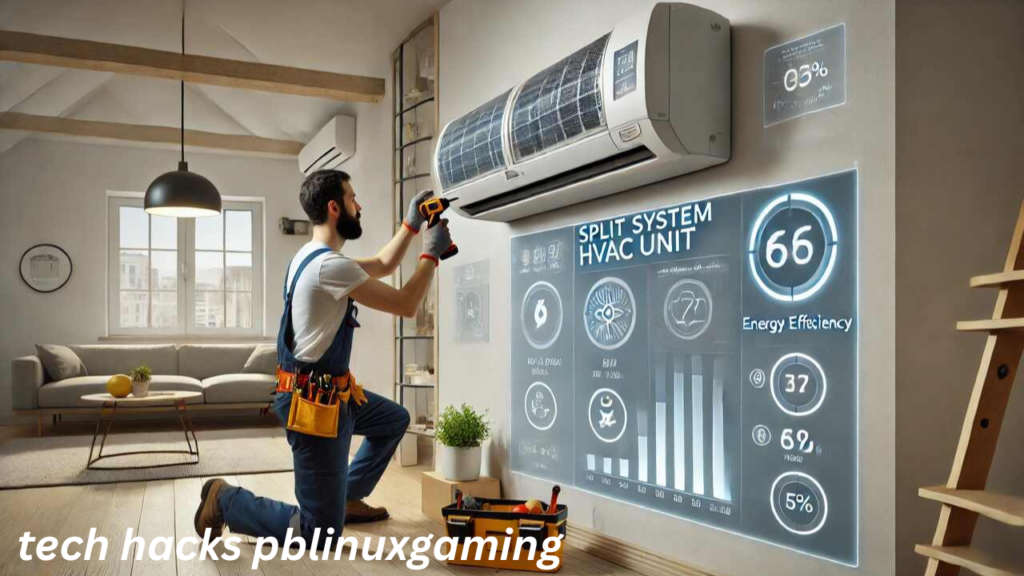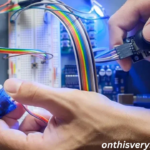tech hacks pblinuxgaming immensely over the past decade, offering gamers an open-source, cost-effective alternative to traditional gaming tech hacks pblinuxgaming, optimizing gaming on Linux still remains a challenge for many. This is where PBLinuxGaming comes in—a distribution tailored specifically to provide a seamless gaming experience on Linux. In tech hacks pblinuxgaming dive deep into tech hacks that can elevate your gaming on PBLinuxGaming, enhancing both performance and compatibility.
Getting Started with PBLinuxGaming
What is PBLinuxGaming?
PBLinuxGaming is a tech hacks pblinuxgaming distribution crafted with gamers in mind. Unlike other general-purpose Linux distributions, PBLinuxGaming optimizes the system for gaming, making it the go-to choice for Linux gamers looking for a tech hacks pblinuxgaming-box experience. This distro focuses on easy setup and maximum gaming compatibility, while maintaining the flexibility of open-source software. It provides pre-configured tools and settings that help you play your favorite games with minimal configuration required.
What sets PBLinuxGaming tech hacks pblinuxgaming to support a wide range of hardware. Whether you’re using a high-end gaming rig or an older laptop, PBLinuxGaming can be tweaked to work efficiently. It integrates key gaming technologies such as Vulkan, tech hacks pblinuxgaming drivers, allowing gamers to play AAA titles and indie games alike with enhanced performance.
Installing PBLinuxGaming

Installing PBLinuxGaming is straightforward for most users. The distribution comes with a user-friendly installer, similar to other Linux distros, that will walk you through each step. However, before installation, ensure your system meets the minimum tech hacks pblinuxgaming, a 64-bit CPU, at least 4GB of RAM, and a graphics card that supports Vulkan or OpenGL. You can download the installation image directly from the PBLinuxGaming website.
tech hacks pblinuxgaming media is ready, boot from it and follow the on-screen prompts to install PBLinuxGaming onto your hard drive. After installation, there are a few critical steps to finalize your setup, such as configuring your graphics tech hacks pblinuxgaming the system packages. You’ll also want to check for additional software repositories to get the latest gaming tools and updates.
PBLinuxGaming comes preconfigured with everything you need, but it’s important to check your system’s performance and tweak the settings to suit your preferences.
Performance Hacks and System Tweaks
Optimizing Your Kernel for Gaming
One of the first and most effective tech hacks for improving gaming performance on PBLinuxGaming is optimizing your Linux kernel. While the default kernel may suffice for regular tasks, specialized kernels can significantly enhance gaming performance by reducing latency and boosting resource management. Kernel options like Zen, Liquorix, and Xanmod are optimized for performance, and they come with tweaks that gamers will appreciate.
The Zen kernel, for example, is designed to prioritize responsiveness, which is ideal for real-time applications like games. It also includes optimizations for CPU scheduling and reduces input latency, crucial for fast-paced gaming. Installing these kernels is relatively simple via the terminal or your package manager. After installation, you can choose your preferred kernel from the boot options and test it for better performance.
Additionally, adjusting sysctl settings—a configuration for the kernel—can also make a huge difference. By fine-tuning values like vm.swappiness (which controls when the system starts swapping data to disk) and fs.file-max (which manages the number of files the system can handle), you can further optimize your gaming experience.
Lightweight Desktop Environments
For an optimal gaming experience, less is more. Heavy desktop environments like GNOME or KDE may look beautiful but can consume significant system resources, which can impact gaming performance. To improve your system’s speed, consider switching to a lightweight desktop environment (DE). Options like XFCE, LXQt, or even window managers like i3 or Openbox can drastically reduce overhead and make your system faster.
These DEs are more minimalist, meaning they use fewer resources and leave more power available for gaming. For example, XFCE is known for its balance between lightness and functionality, offering just enough features without bogging down your system. After installing a lighter DE, you’ll notice faster load times, smoother performance in menus, and reduced lag during gameplay.
Additionally, disabling unnecessary startup services and background processes can free up precious CPU and RAM, allowing games to run more efficiently. Tools like systemctl and htop are useful for tracking and managing these services.
Gaming Enhancements and Compatibility Layers
Wine and Proton Tweaks
One of the primary challenges Linux gamers face is running Windows-exclusive games. Thankfully, tools like Wine and Proton provide compatibility layers that allow you to play Windows games on Linux. PBLinuxGaming makes it easy to install and configure these tools, but further tweaks can significantly enhance game performance.
Wine allows you to run Windows applications on Linux, including games, but it may require some configuration to get everything working smoothly. For optimal results, it’s recommended to install the latest stable version of Wine and use Proton GE (a community build of Proton) for a more reliable and optimized experience with modern games.
Proton (developed by Valve) is built on top of Wine but is specifically tailored to run Steam games on Linux. By adjusting Proton settings—such as enabling DXVK (DirectX to Vulkan translation)—you can boost graphical performance and achieve smoother gameplay. Tools like Lutris and Bottles can help streamline the installation of non-Steam games, giving you more control over how each game runs.
Controller and Peripheral Optimization
For those who prefer a controller over keyboard and mouse, optimizing controllers on PBLinuxGaming is crucial. Most controllers (such as Xbox and PlayStation) are natively supported on Linux, but fine-tuning settings can improve responsiveness. Tools like antimicrox allow users to map gamepad buttons to keyboard keys, making controller support even more versatile.
Moreover, tools like SDL2 Gamepad Tool can help you customize and troubleshoot gamepad configurations. This is particularly useful if you’re using a non-standard controller or a peripheral that requires special configuration.
Don’t forget to install useful performance overlays like MangoHUD or GOverlay. These tools provide on-screen metrics such as FPS, GPU usage, and temperature, giving you real-time data to fine-tune your setup.
Troubleshooting, Mods, and Community Tools
Fixing Common Issues
Despite the many benefits of Linux gaming, there can still be bumps along the way. Issues like screen tearing, input lag, and sound problems are common but solvable. Screen tearing can be resolved by enabling V-Sync in your game settings or by adjusting your graphics driver settings for triple buffering.
Input lag can sometimes be improved by switching to a low-latency kernel or adjusting the input polling rate. Sound issues, especially with PulseAudio, can be resolved by switching to PipeWire, which offers better compatibility and fewer conflicts with modern gaming software.
When games crash or don’t run as expected, check the log files (located in ~/.steam/steam/logs or Proton logs) for specific errors and solutions. The Linux gaming community is highly active and can provide quick solutions for nearly every problem.
Modding Games on Linux
Modding your favorite games on Linux is not only possible but can enhance your gaming experience. Titles like Skyrim and Minecraft have thriving modding communities, and many popular modding tools are available for Linux. With programs like Vortex (via Wine) or native tools, you can install mods just as you would on Windows.
While some mods may require manual installation or adjusting file permissions, the process has become increasingly straightforward on Linux. Tools like Mod Organizer or Nexus Mods offer a user-friendly way to manage your mods and ensure compatibility.
Conclusion
By following these tech hacks for PBLinuxGaming, you can significantly boost your Linux gaming experience. From optimizing the kernel for better performance to fine-tuning Wine and Proton settings, every tweak can lead to smoother, more enjoyable gameplay. Whether you’re running AAA games or indie titles, PBLinuxGaming offers a customizable, performance-focused environment that suits all types of gamers.
FAQs
What makes PBLinuxGaming different from other gaming distros like Pop!_OS or Garuda Linux?
PBLinuxGaming is specifically designed for gamers, offering a more tailored experience with pre-configured tools, gaming-focused settings, and optimized drivers for a seamless gaming experience.
Can I play anti-cheat-protected games on PBLinuxGaming?
Yes, tools like Proton support many anti-cheat systems, though it’s best to check compatibility before purchasing a game. Some anti-cheat mechanisms are more difficult to bypass than others.
Is it possible to run AAA Windows-only games reliably?
Yes, with Wine, Proton, and the right compatibility tweaks, most AAA Windows games can run smoothly on Linux. Some games may require additional configuration to work perfectly.
What are the best resources for keeping up with Linux gaming news and tools?
Follow communities like r/linux_gaming on Reddit, check out forums like Linux Gaming on Steam, and regularly visit websites like Phoronix for news and updates.
How can I contribute to the PBLinuxGaming project or community?
You can contribute by reporting bugs, submitting patches, or helping other users in the community. GitHub is the central hub for contributions.
You May Also Read: https://topbuzusa.com/grow-therapy-provider-login/





